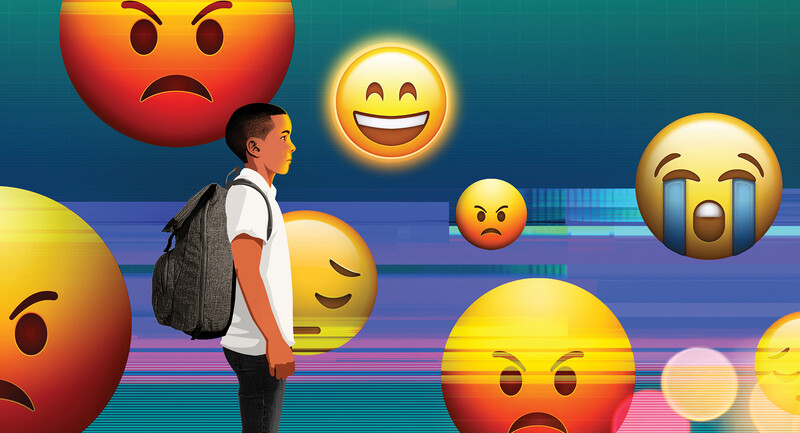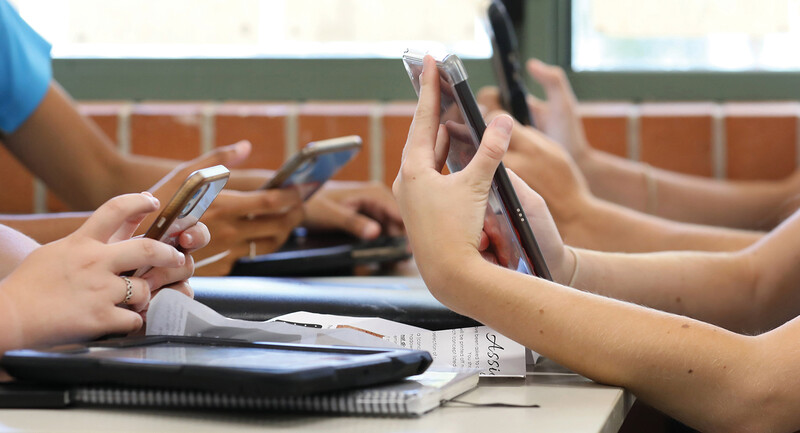As internet connectivity and access to devices becomes increasingly ubiquitous in schools, education leaders around the world are now grappling with the (good) problem of figuring out how to use technology to enhance learning and close equity gaps.
While some schools have seen significant improvements in student achievement and engagement through their use of technology, others have not seen the impact they had hoped for. What is the difference between schools that are using technology effectively and those that are not? More often than not, it comes down to creating a vision for learning before jumping into buying devices or software. Having a clear direction and common language can ensure that a school is headed in the right direction. It can even be the key to turning around troubled tech rollouts.
It was to help educators forge more coherent and intentional digital strategies that the International Society for Technology in Education (ISTE), where I am Chief Executive Officer, developed a set of competencies for creating innovative, tech-driven learning environments. These competencies establish expectations for how technology should be used in school systems. Developed with input from thousands of educators around the world, the standards are framed around what educators see as critical skills and behaviors for students now and in the future—for example, becoming digital citizens, empowered learners, and computational thinkers. Because the standards are organized around distinct school roles—there are separate but interrelated frameworks for students, teachers, leaders, and coaches—they provide a pathway and vocabulary for all stakeholders to keep from getting lost in the weeds as they move ahead with digital initiatives.
A teacher and student share a learning moment at San Pascual Avenue Elementary STEAM Magnet in Los Angeles. Photos by Allen Zaki
Back to the Drawing Board in L.A.
The Los Angeles Unified School District offers a good example of how starting with a coherent vision can lead to improved use of technology to support learning.
In 2013, the district launched a large-scale 1:1 initiative, providing each student with an iPad equipped with digital curriculum. Although the initiative was well intentioned, the district leapt into handing out the devices before establishing a learning vision or providing adequate teacher training. This implementation led to infamously disappointing results and even a series of high-level resignations.
As a result, interim superintendent Ramon Cortines created a Technology Initiative Task Force to develop a new districtwide strategy for providing students and teachers with the technology and training they needed to meaningfully improve teaching and learning. Using the ISTE standards as a reference point, the task force realigned the district's technology plan around a more intentional vision for personalizing learning and ensuring equity. From an implementation standpoint, the key differences in the new project were a laser-like focus on professional development and an emphasis on a common vocabulary around leveraging technology for active and creative learning across subject areas. These priorities sparked greater teacher ownership of the project.
From the start, the district focused on creating a wide-ranging professional development program to integrate the new vision for using technology into schools' instructional cultures. The PD framework has six components:
Interdepartmental collaboration. Whenever a districtwide content team is developing a program of support for all schools, it must include members of the Technology Initiative Task Force and benchmark the program against the relevant ISTE standards. The goal is to ensure that programmatic changes are aligned and informed by the districts' digital priorities.
Instructional leadership cohorts. Cohorts from each district school, made up of the principal and a leadership team, attend a three-day institute to learn how to focus on supporting and clarifying the district's vision for instruction. The one-time training is built around the idea that digital-age instruction should not be a separate parallel track in the curriculum, like the way coding has been historically siloed off into computer science classes, but fully integrated into every subject and classroom.
Standards deep dive. Members of the Technology Initiative Task Force provide specialized, four-hour training sessions for teachers that cover one standard at a time. (The frameworks for teachers and students each include seven standards.) During the sessions, teachers reflect on the standard's relevance and how it might be applied in their school. The goal is for each teacher to walk away with an idea he or she can immediately implement in the classroom.
Practitioner schools. Twenty-three Los Angeles schools have participated in the district's Practitioner School Program, which uses a distributed leadership model to disseminate the task force's recommendations and support their integration in individual schools. Each practitioner school is assigned an instructional technology facilitator to guide the work of teachers and support personalized learning efforts.
Teacher Leader Network. Teachers can apply to participate in 10 after-school or Saturday sessions of the Teacher Leader Network, a professional growth initiative. The sessions are focused either on an individual ISTE standard or a related aspect of computer science. The teachers are asked to implement at least one idea from each session, then bring the results to the next session for discussion.
Exemplars. Educators can use an open-source online tool to access examples of teachers modeling personalized learning and other tech-enhanced instructional practices. The exemplars are organized by standard, grade level, and subject area. Each one includes a narrative that outlines the flow of the lesson; a description of the pedagogical value; artifacts such as annotated videos, sample documents, and slides; and a reflection section.
Elementary school children use their tablets to collaborate on a learning activity at San Pascual Avenue Elementary STEAM Magnet in Los Angeles.
Clarifying Priorities
By forming and implementing its ed-tech vision around a set of shared digital-learning standards, the Los Angeles district is finally on the right path to meeting its central goal of enabling more effective and innovative learning for students. And its aims have become even more ambitious: In June 2018, the district committed to providing rigorous computer science education for all students by 2025.
The lesson is that schools and districts can seize opportunities to rethink and refocus technology strategies by clarifying priorities and building staff knowledge around them. Only that kind of intentional planning and collaboration can ensure that all learners are prepared for their futures and have a hand in creating it. When it comes to effective use of tech, don't get the cart in front of the horse. Starting with a vision is the key to success.









